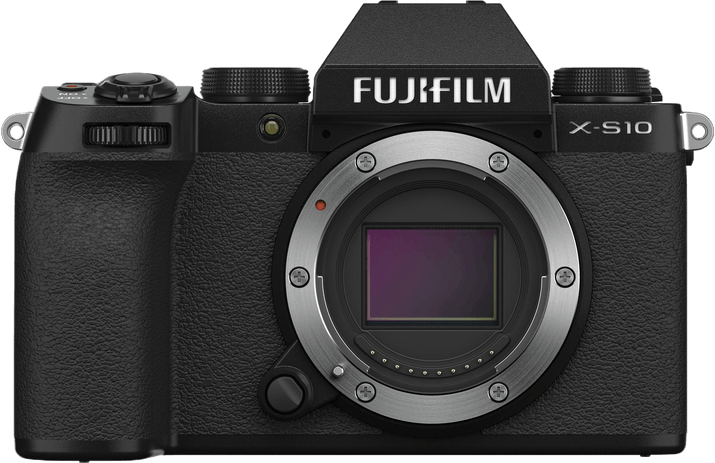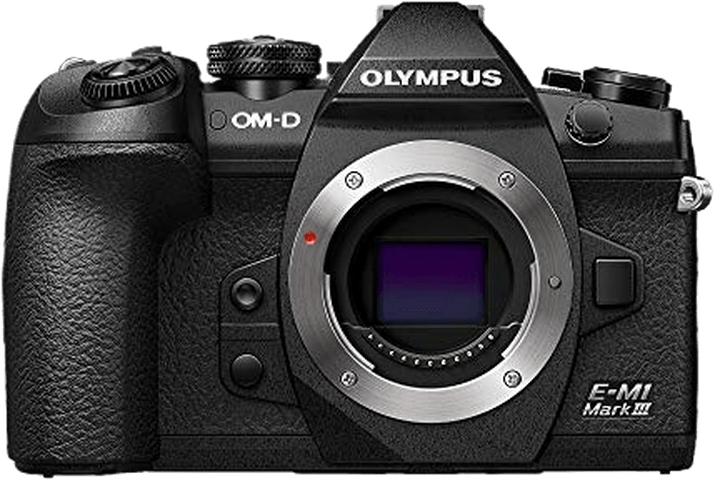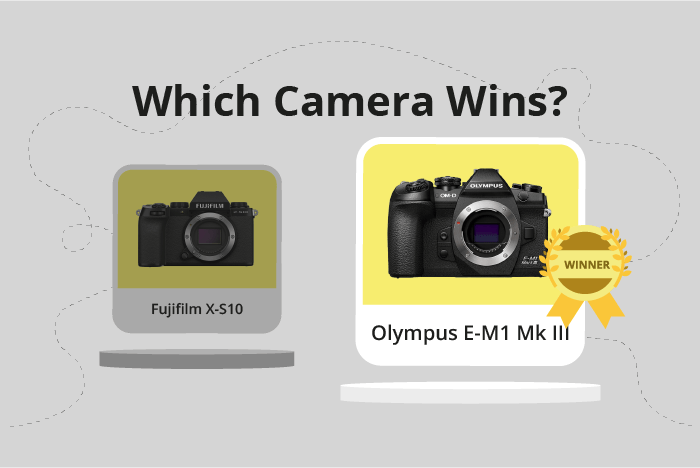Fujifilm X-S10 vs Olympus OM-D E-M1 Mark III Comparison
Fujifilm X-S10

Olympus OM-D E-M1 Mark III

The Olympus OM-D E-M1 Mark III outperforms the Fujifilm X-S10 with a score of 72/100 compared to 69/100. Both cameras are mirrorless and were released in 2020. They share common specifications such as camera type and release year.
The Olympus E-M1 Mark III is superior due to its higher score. However, the Fujifilm X-S10 has an advantage in size and weight, measuring 126 x 85 x 65mm and weighing 465g, making it more compact and lighter than the Olympus model, which measures 134 x 91 x 69mm and weighs 580g.
Although the Olympus camera has a higher score, it comes with a higher launch price of $1799, while the Fujifilm X-S10 is more affordable at $999. Considering the specifications, the Olympus OM-D E-M1 Mark III is a better camera, but the Fujifilm X-S10 offers a more budget-friendly and portable option.
Fujifilm X-S10 vs Olympus OM-D E-M1 Mark III Overview and Optics
The Fujifilm X-S10 wins in optics with a score of 72/100, while the Olympus OM-D E-M1 Mark III scores 68/100. Both cameras share some common specifications, such as a CMOS sensor, image stabilization, and a similar shooting speed range (20 for the X-S10 and 60 for the E-M1 Mark III).
The X-S10 outperforms the E-M1 Mark III with its 26-megapixel resolution, higher than the 20-megapixel resolution of the Olympus. This higher resolution results in more detailed and sharper images. Additionally, the Fujifilm X-S10 has a larger APS-C sensor size, which captures more light and produces better low-light performance and image quality. The Fujifilm X lens mount offers a wide variety of lenses, giving users more options for their photography needs.
On the other hand, the Olympus E-M1 Mark III has a faster shooting speed of 60 compared to the X-S10’s 20, allowing for better action photography and faster continuous shooting. The Olympus camera also has a DXOMARK sensor score of 80, although the X-S10 does not have a DXOMARK score due to their policy of not scoring Fujifilm cameras. The Micro Four Thirds lens mount of the E-M1 Mark III provides a wide selection of lenses as well.
To conclude, the Fujifilm X-S10 triumphs in optics due to its higher resolution and larger sensor size, resulting in better overall image quality. The Olympus OM-D E-M1 Mark III, however, has a faster shooting speed and a DXOMARK sensor score, making it an appealing option for action photography and those who value sensor performance. Both cameras offer a broad range of lenses, making them suitable for various photography styles and preferences.
Fujifilm X-S10 vs Olympus OM-D E-M1 Mark III Video Performance
The Fujifilm X-S10 outperforms the Olympus OM-D E-M1 Mark III in video capabilities, scoring 91/100 compared to the latter’s 83/100. Both cameras share some common specifications, such as 4K video resolution and maximum video dimensions of 4096 x 2160. Additionally, both cameras feature built-in time-lapse functionality.
The Fujifilm X-S10 excels with its higher maximum video frame rate of 240fps, significantly surpassing the Olympus OM-D E-M1 Mark III’s 60fps. This higher frame rate allows for smoother video playback and more flexibility in post-production, such as creating slow-motion effects.
The Olympus OM-D E-M1 Mark III, despite its lower video score, may still have some advantages over the Fujifilm X-S10. For instance, it could offer better image stabilization, autofocus performance, or color reproduction in certain situations. However, these factors are not reflected in the video score, and the Fujifilm X-S10 remains the superior choice for video capabilities.
To conclude, the Fujifilm X-S10 is the better camera for video recording due to its higher video score and superior maximum frame rate. While the Olympus OM-D E-M1 Mark III may have other advantages, they do not contribute to its overall video capabilities. Thus, for those prioritizing video performance, the Fujifilm X-S10 is the recommended choice.
Fujifilm X-S10 vs Olympus OM-D E-M1 Mark III Features and Benefits
The Olympus OM-D E-M1 Mark III outperforms the Fujifilm X-S10 in terms of features, with a score of 83/100 compared to the X-S10’s 70/100. Both cameras share several specifications, such as a 3-inch screen size, touchscreen functionality, flip screens, and Bluetooth connectivity. However, there are key differences that set the E-M1 Mark III apart.
The winning camera, the E-M1 Mark III, has a slightly higher screen resolution at 1,037,000 dots compared to the X-S10’s 1,040,000 dots. This gives the E-M1 Mark III a marginally better display quality. The most significant advantage of the E-M1 Mark III is its Wi-Fi connectivity, which the X-S10 lacks. The inclusion of Wi-Fi allows for easier file transfer and remote control of the camera, making it more versatile and user-friendly.
The Fujifilm X-S10, despite its lower score, has some strengths. The X-S10 and E-M1 Mark III share most of their features, so the X-S10 is not an inferior camera. However, it does not have any standout advantages over the E-M1 Mark III in terms of features.
Considering the differences in feature scores and specifications, the Olympus OM-D E-M1 Mark III is the better camera in this comparison. Its marginally higher screen resolution and Wi-Fi connectivity give it an edge over the Fujifilm X-S10. While the X-S10 is still a competent camera with many shared specifications, it does not offer any unique advantages over the E-M1 Mark III. Therefore, the E-M1 Mark III is the superior choice for those prioritizing camera features.
Fujifilm X-S10 vs Olympus OM-D E-M1 Mark III Storage and Battery
The Olympus OM-D E-M1 Mark III outperforms the Fujifilm X-S10 in storage and battery, scoring 71 points compared to the X-S10’s 35 points. Both cameras have USB charging and accept SD, SDHC, and SDXC memory cards. However, the E-M1 Mark III has two memory card slots, with one being UHS-II compatible, providing faster transfer rates and better performance. Additionally, the E-M1 Mark III’s battery life lasts for 420 shots, while the X-S10’s battery life reaches only 325 shots.
The Fujifilm X-S10 has limited advantages in this comparison, only matching the E-M1 Mark III in USB charging capability. The Olympus OM-D E-M1 Mark III clearly surpasses the Fujifilm X-S10 in terms of storage capacity and battery life, making it the superior choice for photographers who require extended shooting sessions and efficient storage management.
Alternatives to the Fujifilm X-S10 and Olympus OM-D E-M1 Mark III
Are you still undecided about which camera is right for you? Have a look at these popular comparisons that feature the Fujifilm X-S10 or the Olympus OM-D E-M1 Mark III:

